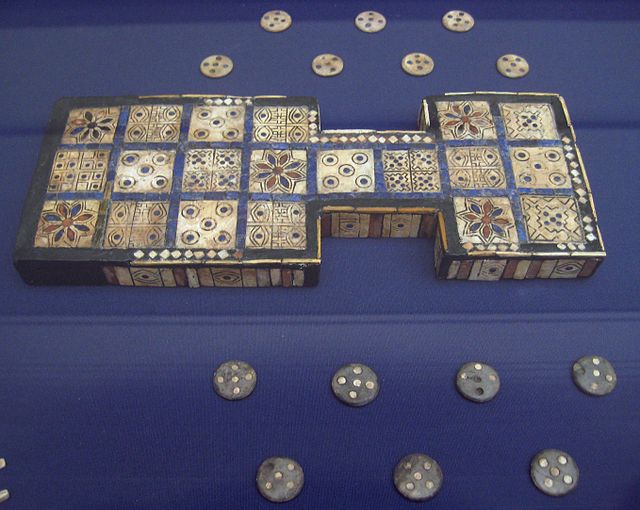Tables games are a class of board game that includes backgammon and which are played on a tables board, typically with two rows of 12 vertical markings called points. Players roll dice to determine the movement of pieces. Tables games are among the oldest known board games, and many different varieties are played throughout the world. They are called 'tables' games because the boards consist of four quadrants or 'tables'. The vast majority are race games, the tables board representing a linear race track with start and finish points, the aim being to be first to the finish line, but the characteristic features that distinguish tables games from other race games are that they are two-player games using a large number of pieces, usually fifteen per player.
Tables game
Roman Ludus duodecim scriptorum board from the 2nd century, Aphrodisias
Burzoe demonstrates the game of nard to the Indian Rajas
Backgammon set from around the 10th century, China
Backgammon is a two-player board game played with counters and dice on tables boards. It is the most widespread Western member of the large family of tables games, whose ancestors date back nearly 5,000 years to the regions of Mesopotamia and Persia. The earliest record of backgammon itself dates to 17th-century England, being descended from the 16th-century game of Irish.
One of the gameboards found by Sir Leonard Woolley in the Royal Cemetery at Ur. British Museum
Roman Ludus duodecim scriptorum board from the 2nd century, Aphrodisias
The poet Herr Goeli playing, Codex Manesse, 14th C.
A Georgian Noblewomen Darnica Gurieli with backgammon in the foreground, circa 1635







